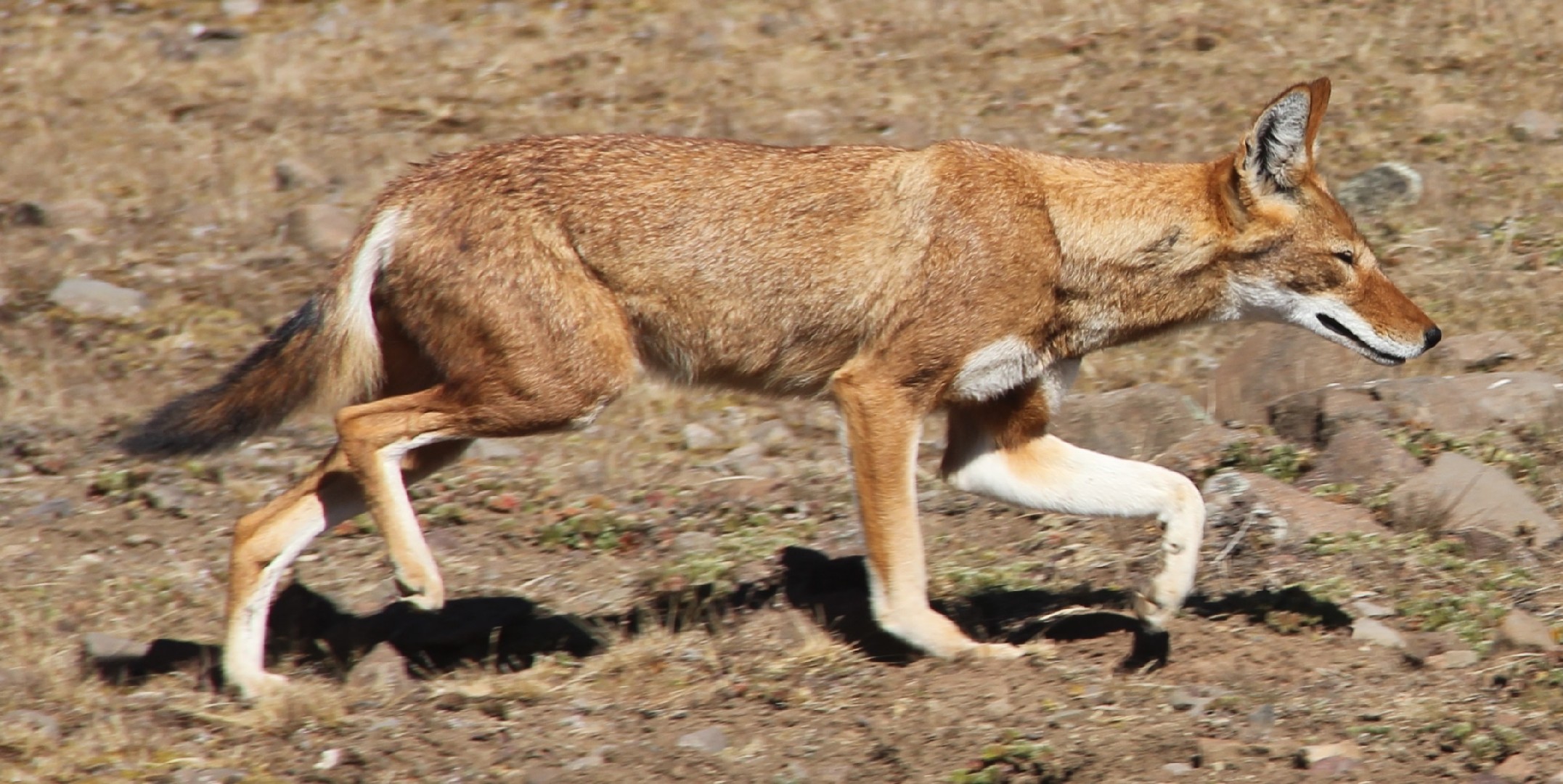Ethiopian wolf
A species of Wolves jackals and allies, Also known as Simien fox Scientific name : Canis simensis Genus : Wolves jackals and allies
Ethiopian wolf, A species of Wolves jackals and allies
Also known as:
Simien fox
Scientific name: Canis simensis
Genus: Wolves jackals and allies
Content
Description General Info
 Photo By Laika ac , used under CC-BY-SA-2.0 /Cropped and compressed from original
Photo By Laika ac , used under CC-BY-SA-2.0 /Cropped and compressed from original Description
The Ethiopian wolf is similar in size and build to North America's coyote; it is larger than the golden, black-backed, and side-striped jackals, and has comparatively longer legs. Its skull is very flat, with a long facial region accounting for 58% of the skull's total length. The ears are broad, pointed, and directed forward. The teeth, particularly the premolars, are small and widely spaced. The canine teeth measure 14–22 mm in length, while the carnassials are relatively small. The Ethiopian wolf has eight mammae, of which only six are functional. The front paws have five toes, including a dewclaw, while the hind paws have four. As is typical in the genus Canis, males are larger than females, having 20% greater body mass. Adults measure 841–1,012 mm (33.1–39.8 in) in body length, and 530–620 mm (21–24 in) in height. Adult males weigh 14.2–19.3 kg (31–43 lb), while females weigh 11.2–14.15 kg (24.7–31.2 lb). The Ethiopian wolf has short guard hairs and thick underfur, which provides protection at temperatures as low as −15 °C. Its overall colour is ochre to rusty red, with dense whitish to pale ginger underfur. The fur of the throat, chest and underparts is white, with a distinct white band occurring around the sides of the neck. There is a sharp boundary between the red coat and white marks. The ears are thickly furred on the edges, though naked on the inside. The naked borders of the lips, the gums and palate are black. The lips, a small spot on the cheeks and an ascending crescent below the eyes are white. The thickly furred tail is white underneath, and has a black tip, though, unlike most other canids, there is no dark patch marking the supracaudal gland. It moults during the wet season (August–October), and there is no evident seasonal variation in coat colour, though the contrast between the red coat and white markings increases with age and social rank. Females tend to have paler coats than males. During the breeding season, the female's coat turns yellow, becomes woolier, and the tail turns brownish, losing much of its hair. Animals resulting from Ethiopian wolf-dog hybridisation tend to be more heavily built than pure wolves, and have shorter muzzles and different coat patterns. 
General Info
Lifespan
8-10 years
Diet
Ethiopian wolf follows an omnivorous diet with a preference for rodents and small mammals. It also consumes insects, fruits, and eggs, actively scavenging carrion when available.
Appearance
The ethiopian wolf is medium-sized with a lean body and slender limbs. Its coarse, dense fur features a colorful coat of red, brown, and white with unique markings on its face and legs. Notably, the animal has a long and bushy tail with marked rings. Adult males exhibit a dark mane which can erect when the animal is agitated, enhancing its seemingly larger appearance.
Behavior
Ethiopian wolf exhibits a social, pack-based lifestyle, characterized by distinct hierarchical structures and coordinated foraging tactics. Known for their alarm calls and vocal communication, these creatures establish territories through scent-marking. Given their alpine habitat, ethiopian wolf have adapted diurnal patterns of activity to coincide with fluctuating thermal conditions.
Population
Decreasing